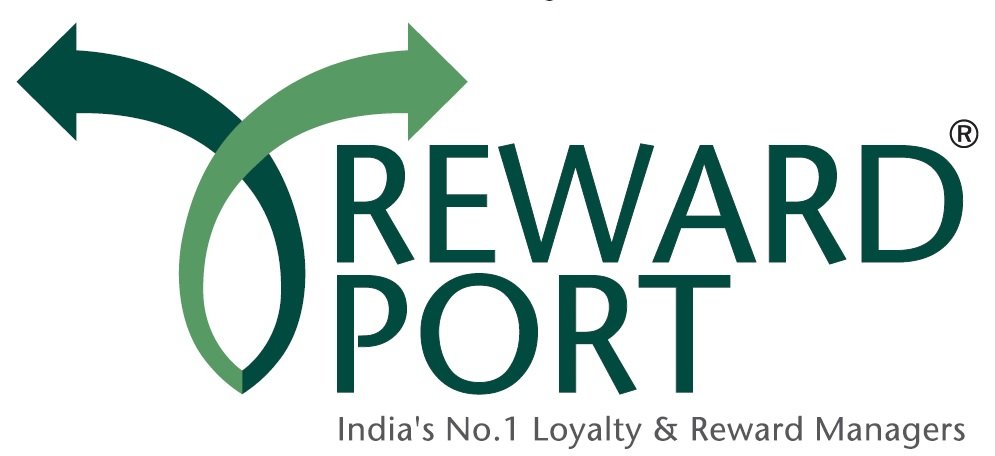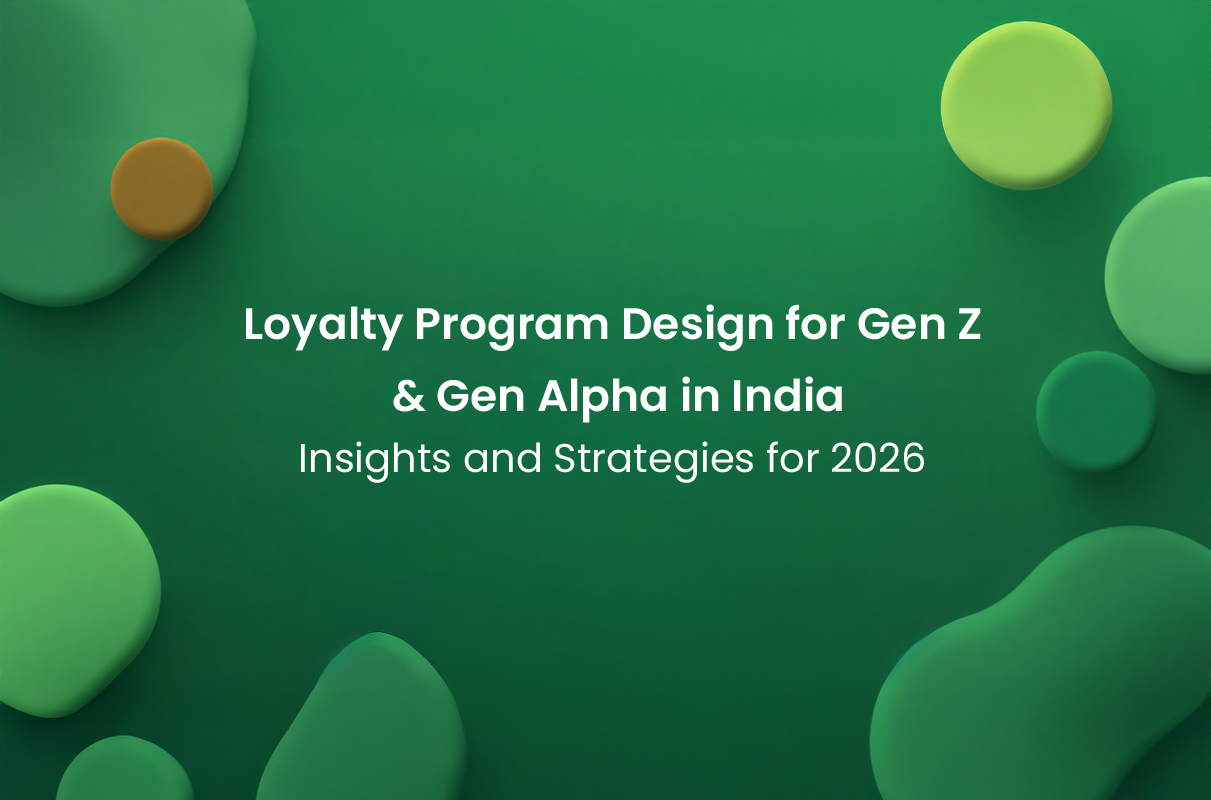
Loyalty Program Design for Gen Z and Gen Alpha in India: Insights and Strategies for 2026
Explore loyalty program design tailored for India’s Gen Z and Gen Alpha with personalized, experiential rewards and RewardPort’s proven solutions.
Loyalty Program Design for Gen Z and Gen Alpha in India: Insights and Strategies for 2026
The landscape of loyalty program design in India is evolving rapidly to meet the unique expectations of Gen Z and Gen Alpha consumers. These digitally native generations prioritize personalization, experiences, social values, and instant gratification over traditional points-driven rewards. For businesses and marketers aiming to engage these cohorts effectively, aligning loyalty strategies with their behavioral traits and preferences is critical. RewardPort, with its extensive experience in consumer promotions and channel incentives, offers a suite of plug-and-play solutions ideally suited to capturing this emerging opportunity.
Understanding Gen Z and Gen Alpha: Brand Relationships and Loyalty Trends
Gen Z (born approximately 1997-2012) and Gen Alpha (born 2010 onward) are reshaping brand loyalty with digital-first expectations. Over 90% of Gen Z in India prefer digital payments such as UPI, and about 70% discover brands primarily online before any in-store interaction. Gen Alpha, the youngest consumers, are influential household decision-makers, especially in food, tech, and entertainment purchases, with an appetite for interactive, immediate, and emotionally fulfilling experiences. Both cohorts expect brands to reflect their values and offer authenticity; approximately 75% of Gen Z are willing to pay a premium for sustainability-aligned products.
Key Loyalty Program Trends for Gen Z and Gen Alpha in India
A successful loyalty program targeting these segments must embrace these key pillars: – Hyper-Personalization and AI-Driven Engagement: Programs tailored to individual preferences and behaviors — offering bespoke rewards, recommendations, and content — resonate deeply with these consumers. For instance, AI-powered digital try-ons and personalized product suggestions create emotional connections. – Experiential and Instant Rewards Over Discounts: Both generations favor VIP event access, AR/VR engagements, exclusive digital content, or early product launches instead of mere cashback or traditional discounts. Experiences foster community and brand affinity. – Gamification and Social Community Elements: Incorporating branded games, challenges, leaderboards, and badges captures attention and drives repeated engagement, particularly as more than 80% of Indian Gen Z actively engage with mobile and video games. – Exclusivity and Youth-Focused Offers: Targeted student or youth offers that require quick verification to redeem create a sense of privilege and motivate loyalty program sign-ups. Time-limited or ‘for you only’ deals maximize perceived value. – Flexible Reward Choices & Payment Innovations: Offering options like cashback, instant digital redemption, experiential rewards, and integrating Buy Now Pay Later (BNPL) mechanisms cater to the flexible spending habits of these generations. – Values and Social Responsibility: Engagement is strengthened when loyalty programs integrate social causes, sustainability, or enable volunteering through mission-linked rewards — a key differentiator for socially conscious Gen Z.
RewardPort’s Perspective and Solutions for Engaging Gen Z and Gen Alpha
RewardPort’s expertise directly addresses these trends with scalable, India-first program modules and a rich reward catalog: – The Gamification Engine offers 100+ branded games ideal for engaging youthful consumers through fun challenges and community leaderboards. – Our RewardOne voucher engine supports personalized, exclusive reward rules and tracking that enable brands to deliver authentic, adaptive loyalty experiences. – For channel partners and employees, Channely provides digital badges, instant redemption options like UPI cashback, and gamified progress tracking, aligning well with young retail staff preferences. – RewardPort’s Travel, Entertainment, and Food vouchers align closely with Gen Z and Gen Alpha desires for experiential and emotional rewards, supported by extensive partnerships across India. Case examples inspired by broader client successes include campaigns combining assured instant rewards (like movie e-vouchers through CineRewardz), loyalty tiers with curated experiential prizes, and exclusive student offers verified via digital authentication, driving high ROI and repeat participation.
Designing Future-Ready Loyalty Programs in India
Integrating AI for predictive personalized offers, leveraging influencers and user-generated content, and creating seamless omnichannel experiences will be critical as Gen Alpha matures. Marketing to their parents with family-centric rewards further expands relevance. The shift from static point accumulation to dynamic, interactive, and values-driven programs is both an imperative and an opportunity for brands and channel partners. RewardPort’s plug-and-play loyalty modules empower marketers to innovate rapidly and cost-effectively, ensuring relevance from acquisition through loyalty and advocacy phases across youthful Indian markets.
For India’s marketers and channel leaders, designing loyalty programs that attract and retain Gen Z and Gen Alpha consumers entails a pivot toward digitally savvy, personalized, and experience-rich approaches. RewardPort stands at the forefront with proven tools and rewards that transform consumer insights into impactful loyalty journeys, driving sales, engagement, and lifetime value in the fast-evolving Indian marketplace.
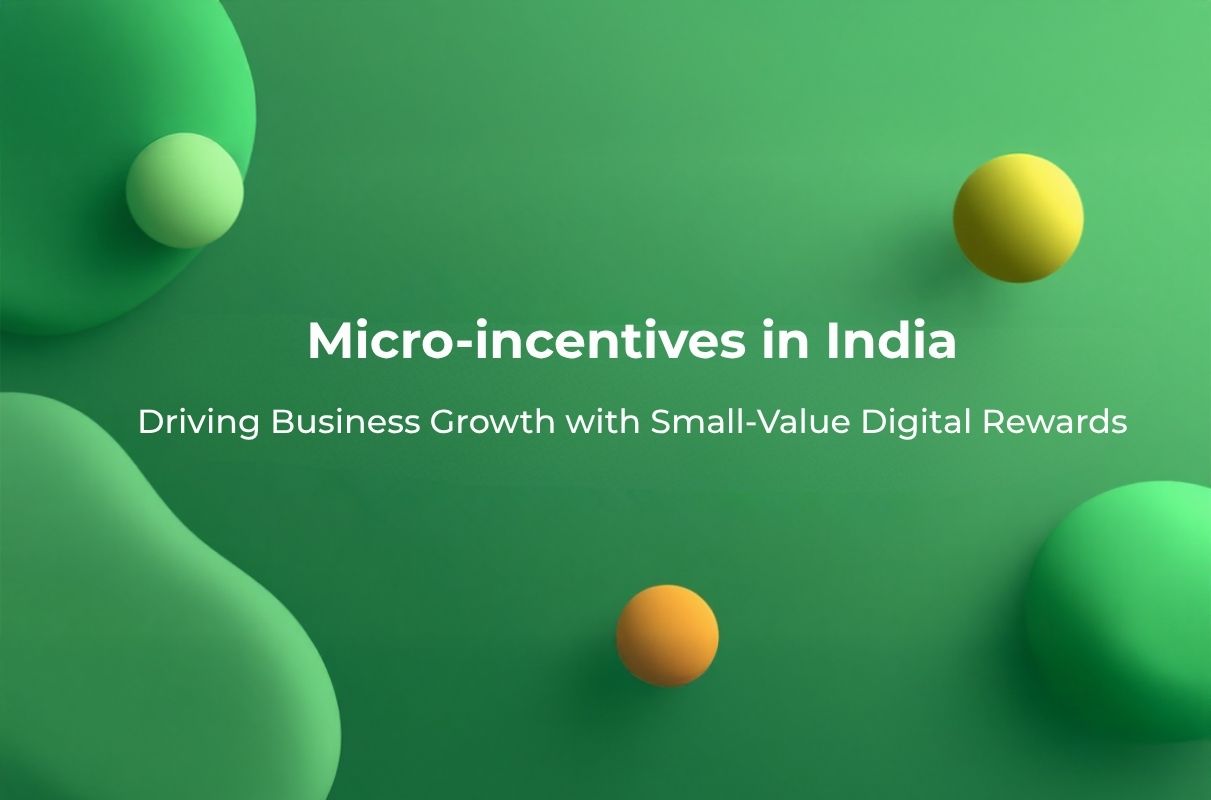
Micro-incentives in India: Driving Business Growth with Small-Value Digital Rewards
Explore how micro-incentives using small-value digital rewards empower Indian marketers to boost consumer engagement and channel loyalty efficiently.
Micro-incentives in India: Driving Business Growth with Small-Value Digital Rewards
In today’s competitive Indian market, brands, channel leaders, and HR professionals are constantly seeking innovative ways to engage their customers, partners, and employees. Micro-incentives—small-value digital rewards—have emerged as a powerful tool to motivate target audiences effectively and at scale. These instant, easily redeemable rewards enhance engagement, loyalty, and productivity while aligning perfectly with India’s rapidly digitalizing ecosystem.
Understanding Micro-incentives and Their Growing Relevance in India
Micro-incentives refer to low-denomination rewards such as cashback, instant vouchers, points, or experiential perks that organizations offer frequently to encourage specific behaviors and transactions. Unlike traditional high-value incentives, these small, quick-win rewards create steady motivation and continuous participation. In India, the surge of smartphone penetration and digital payment adoption has made micro-incentives an ideal engagement strategy for a vast spectrum of audiences from urban consumers to rural trade partners.
Key Trends Driving Micro-incentive Adoption
Research indicates a sharp rise in digital micro-incentive programs by brands especially in FMCG, consumer electronics, and automotive sectors. These programs leverage instant digital redemption, which satisfies the growing customer expectation for immediacy. For trade partners like dealers, distributors, and retailers, micro-incentives are increasingly linked not just to sales volumes but also to actions like timely reporting, stock display, and digital engagement. Moreover, wellness- and experience-based micro-rewards have become popular among younger urban consumers.
RewardPort’s Strategic Role in Micro-incentive Campaigns
As India’s specialist in consumer promotions, loyalty, and channel incentives, RewardPort offers comprehensive plug-and-play modules that simplify deployment of micro-incentive programs. Whether it is our Cashback Engine delivering instant or tiered cashback, the RewardOne gift voucher platform with real-time tracking, or the Gamification Engine featuring over 100 branded games, our solutions are designed to meld fun, ease, and strategic results.
RewardPort’s extensive rewards catalog plays a vital role in ensuring that micro-incentives resonate with the target audience. From travel experiences like AirPac and VacPac, to OTT subscriptions, food vouchers, wellness apps, and multi-brand gift vouchers, brands can customize rewards to meet diverse preferences and drive better engagement.
Real-World Impact: RewardPort Case Studies
Several brands leveraging RewardPort’s platforms have recorded significant uplifts by incorporating micro-incentives. For example, Bikaji’s festive QR scan-to-win campaign integrated multiple small-value rewards such as OTT subscriptions and pizza vouchers, resulting in a meaningful festive sales uplift. Similarly, the Aaradhana Foods campaign combined small-value cashback via QR inside packs with draws for premium appliances, successfully driving repeat purchases.
In the channel incentives space, RewardPort’s Dealer & Channel Partner Incentive Programs help businesses engage partners with micro-incentives that reward behaviors beyond sales volume, boosting overall trade engagement and loyalty. Our plug-and-play modules enable seamless integration with CRM/ERP systems to maximize efficiency and effectiveness.
Benefits of Micro-incentives for Indian Marketers and Channel Leaders
Micro-incentives offer several strategic advantages:
- Higher Engagement Frequency: Small rewards encourage frequent interaction and continuous motivation.
- Cost Efficiency: Smaller-value rewards spread across many participants reduce cost per engagement while delivering impactful results.
- Instant Gratification: Digital delivery coupled with instant redemption satisfies modern consumer and partner demand for speed.
- Personalization: Micro-incentives can be customized to different audience segments using RewardPort’s AI-driven targeting and flexible reward catalog options.
- Multi-channel Reach: RewardPort’s platforms support omnichannel deployment—digital apps, WhatsApp, QR codes, and offline games—to engage diverse Indian audiences.
Future Outlook: Micro-incentives Shaping 2026 and Beyond
The momentum for micro-incentives in India is set to grow in line with digital ecosystem expansion, government policy support for MSMEs, and evolving buyer behavior post-pandemic. Brands placing a premium on real-time, personalized, and experiential rewards powered by platforms like RewardPort will gain a competitive edge. The shift from traditional loyalty structures towards frequent, low-value rewards tailored for Indian consumers and trade partners will become the new normal.
Micro-incentives leveraging small-value digital rewards are revolutionizing how Indian marketers and channel leaders engage their audiences. With the right strategy and technology partner like RewardPort, businesses can drive higher loyalty, frequent engagement, and cost-effective campaign outcomes. Embracing micro-incentives is essential for success in India’s fast-evolving digital and retail landscape in 2026 and beyond.
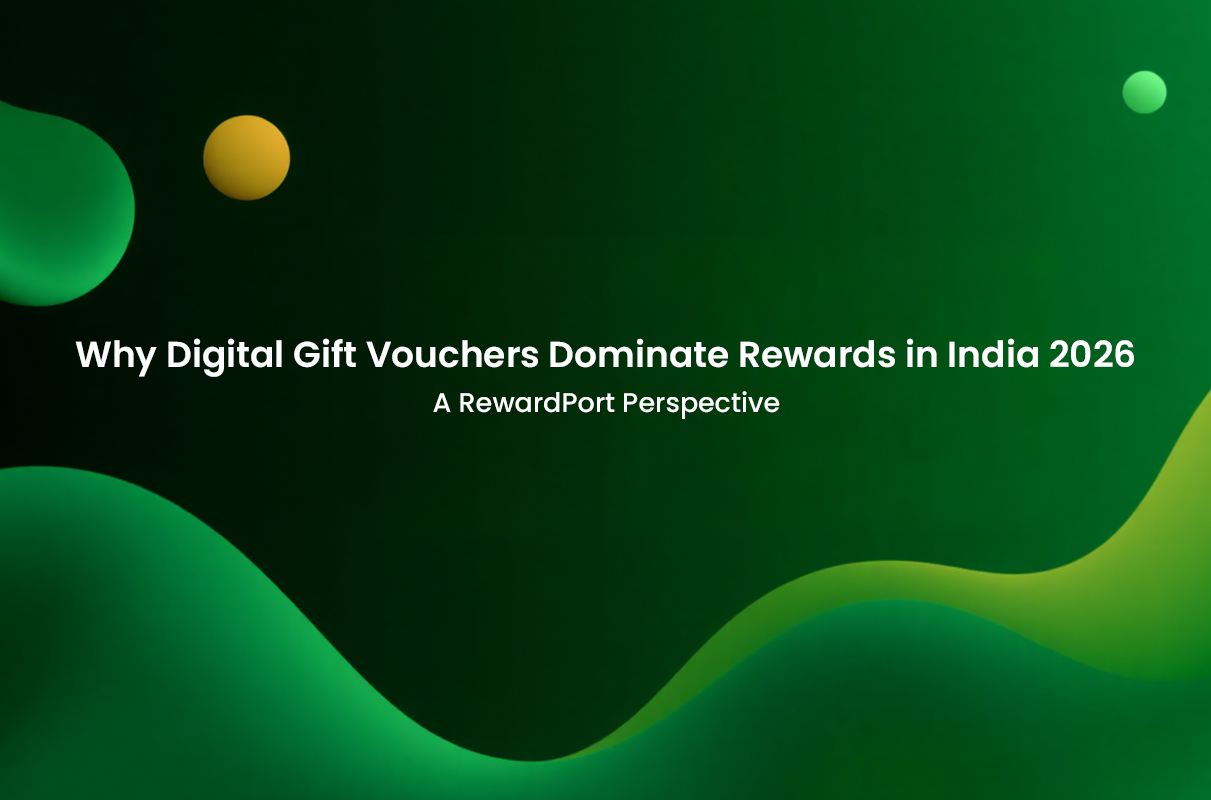
Why Digital Gift Vouchers Dominate Rewards in India 2026: A RewardPort Perspective
Explore why digital gift vouchers are the leading rewards in India’s consumer promotions and channel incentives in 2026, powered by convenience and scalability.
Why Digital Gift Vouchers Dominate Rewards in India 2026: A RewardPort Perspective
Digital gift vouchers have revolutionized the rewards ecosystem in India, becoming the preferred choice across consumer promotions, loyalty programs, channel incentives, and employee rewards by 2026. This transformation is driven by India’s rapid digital adoption, investor confidence in seamless digital payment platforms, and the operational advantages these rewards bring to brands and organizations nationwide.
India’s Digital Voucher Surge: Context and Market Dynamics
The Indian digital gift card market, valued at over USD 15 billion in 2024, is on a steep growth trajectory with an expected CAGR of approximately 16% over the next decade. This surge reflects broader trends powered by the Digital India initiative, UPI’s explosive growth in transactions, and increasing consumer affinity for cashless, instant gratification experiences. Digital gift vouchers now constitute more than 90% of the rewards market’s value in India, clearly overtaking traditional physical gifts due to their convenience, ease of distribution, and personalization capabilities.
Key Trends Fueling Digital Gift Voucher Dominance
Market leaders and RewardPort clients alike tap into these dominant trends: – Instant Delivery and Redemption: Digital gift vouchers enable immediate rewards, critical in boosting engagement during time-sensitive campaigns like festivals or product launches. – Personalization and Localization: AI-driven targeting and vernacular language support enable highly relevant offers, especially in Tier 2 and 3 cities, broadening reach and enhancing effectiveness. – Integration with Payment Ecosystems: Leading fintech platforms embed rewards directly within payment apps, delivering seamless user experiences and simplifying redemption. – Scalability for Channel Incentives: Brands reward extensive dealer and retailer networks efficiently, reducing logistics overhead and improving incentive tracking.
RewardPort’s Strategic Edge in Digital Vouchers
As India’s specialist in consumer promotions and incentive programs, RewardPort harnesses these trends to design tailored, impactful campaigns: – Our RewardOne gift voucher engine offers a customizable catalog of over 950 brands and 50,000+ merchandise SKUs, enabling clients to deliver relevant, desirable rewards aligning with customer preferences and purchase behavior. – The Channely platform integrates CRM/ERP data to seamlessly run channel partner incentive programs, giving dealers flexible, instant rewards via digital vouchers. – In a notable example, RewardPort supported a leading FMCG client with a gift-with-purchase campaign that included instant movie ticket vouchers, driving a measurable uplift in repeat purchases and consumer delight.
Use Cases Across Business Segments
1. Consumer Promotions: Instant digital vouchers boost trial and repeat purchase rates, as seen in festive campaigns offering assured rewards to customers. 2. Loyalty Programs: Points conversion to digital vouchers enhances redemption rates and customer lifetime value. 3. Channel Partner Incentives: Digital vouchers reduce delivery complexity and increase partner engagement with flexible reward choice. 4. Employee Rewards: Catalog-driven digital vouchers serve as compelling incentives in employee recognition and sales motivation programs.
Digital Vouchers as the Future of Rewards in India
Digital gift vouchers offer an unbeatable blend of speed, scale, and personalization, anchored in a maturing digital infrastructure that makes them India’s dominant rewards form by 2026. For marketers and HR/channel leaders focused on maximizing engagement ROI, RewardPort’s end-to-end platforms and extensive reward catalog create a powerful advantage in deploying these reward solutions effectively.
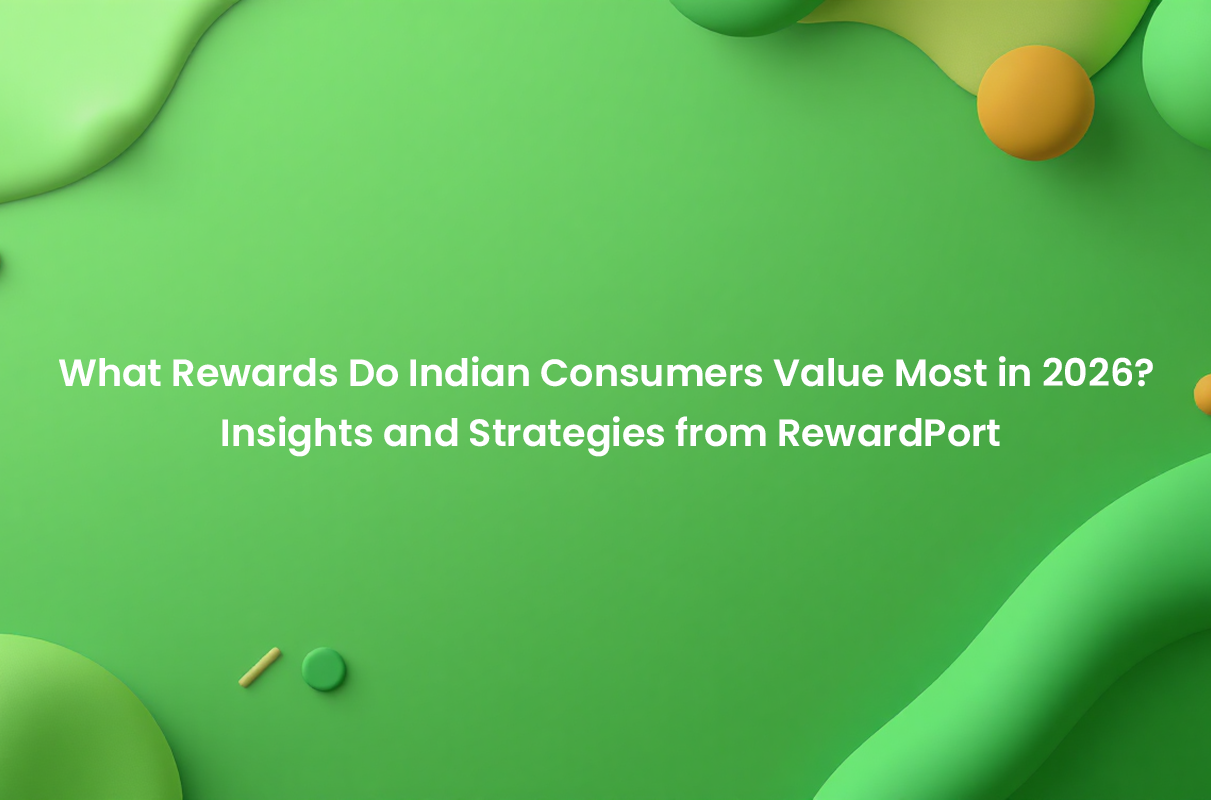
What Rewards Do Indian Consumers Value Most in 2026? Insights and Strategies from RewardPort
Discover the top rewards Indian consumers value in 2026, from cashback to experiential and green rewards, and how RewardPort drives engagement.
What Rewards Do Indian Consumers Value Most in 2026? Insights and Strategies from RewardPort
Indian consumers in 2026 seek rewards that combine personalization, immediacy, and experience. As India’s loyalty program market grows rapidly—expected to surge from USD 4.3 billion in 2025 to over USD 17 billion by 2035—understanding which reward formats resonate most strongly can help marketers, trade leaders, and HR/channel partners optimize engagement and drive business outcomes.
Cashback, Discounts, and Instant Digital Rewards: The Foundation of Consumer Preference
Across urban and rural India, cashback and discount incentives remain the top motivation for joining loyalty programs. Around 68% of urban consumers and 60% of rural consumers prioritize tangible, instant financial benefits, making cashback and assured discounts a critical element in campaigns. This aligns well with RewardPort’s Cashback Engine capabilities, which offer instant or tiered cashback models that appeal to mass-market shoppers and value retail consumers. These rewards are simple, transparent, and offer instant gratification—key to building trust and repeat purchase behavior.
Personalization and Technology Amplify Reward Impact
Indian consumers increasingly expect offers tailored to their preferences and purchase histories. AI-driven personalization boosts program effectiveness by 35-47%, increasing repeat buys. RewardPort’s Freebucks points and Pay system facilitates personalized redemptions, enabling targeted promotions across consumer segments. Furthermore, integration with fintech channels such as BNPL (Buy Now, Pay Later), UPI, and mobile wallets—strong drivers of India’s digital payments adoption—streamlines redemption and reward access, enhancing user convenience and engagement.
Experiential Rewards Are Gaining Traction, Especially Among Urban and Premium Segments
Beyond monetary incentives, experiential rewards such as travel, dining, entertainment, and wellness offerings attract discerning consumers in metros like Mumbai and Bengaluru. RewardPort’s extensive travel catalog (AirPac, VacPac) and entertainment rewards (movie tickets via CineRewardz, OTT subscriptions, and dining vouchers) align perfectly with this trend. Such rewards deepen emotional engagement and brand loyalty, especially when offered as exclusive tiers or milestone incentives.
Sustainability: Green Rewards Create New Loyalty Imperatives
Environmental consciousness is reshaping Indian consumer expectations. Approximately 64% prefer brands offering sustainability-linked rewards, like points for eco-friendly packaging returns or green delivery choices. FMCG brands leveraging such green loyalty initiatives have reported retention boosts up to 20%. RewardPort supports these green rewards with catalog options and customized rules in RewardOne and CRM integrations via Channely to embed sustainability into loyalty programs seamlessly.
Channel and Dealer Incentive Programs: Tiered Milestones and Engagement
In the B2B and channel space, tiered and milestone-based rewards remain critical for motivating dealer and partner networks. RewardPort’s Channely platform integrates with ERP/CRM systems to automate dealer incentives, improve partner engagement, and increase timely payments, backed by proven case studies showing performance uplifts and loyalty growth. These programs combine travel incentives, multi-brand gift vouchers, and instant redemptions tailor-made for channel partners’ preferences.
The Digital Convenience Factor: Seamless Omni-channel Redemptions
Modern Indian consumers expect a frictionless omnichannel experience—earning and redeeming rewards via apps, digital wallets, and in-store interactions. RewardPort’s WhatsApp Redemption Flow, QR scan-to-win, and digital gift voucher engines create seamless user journeys that reduce redemption friction, boost participation, and enhance customer satisfaction.
RewardPort Perspective: Building Integrated, Insight-Driven Reward Campaigns for 2026 and Beyond
As India’s rewards ecosystem grows more complex, RewardPort advises clients to focus on multi-layered campaigns balancing: – Immediate cashback and discount-based incentives for mass appeal – Experiential and wellness rewards for premium and urban segments – Green and sustainable rewards for growing eco-conscious consumers – B2B tiered programs for channel and partner loyalty – Advanced digital integration for seamless customer journeys RewardPort’s plug-and-play modules and extensive catalog enable marketers to tailor promotion lifecycles—from acquisition to referral—leveraging analytics and real-time redemption data to optimize ROI and engagement continuously.
In 2026, Indian consumers’ reward preferences are shaped by a blend of instant value, experiential depth, sustainability, and digital convenience. RewardPort’s comprehensive solutions, vast rewards catalog, and success stories reflect these dynamic trends, empowering marketers and leaders to craft high-impact, consumer-centric loyalty and incentive programs tuned for the future Indian market.
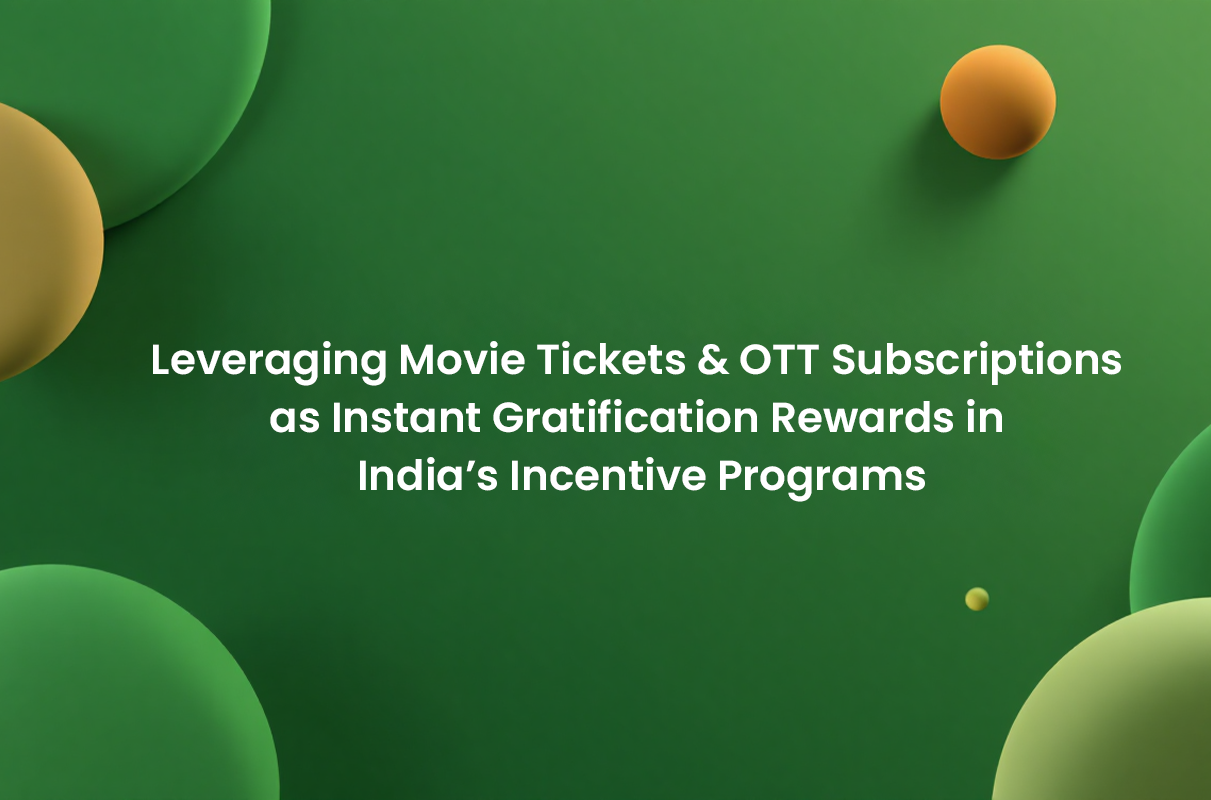
Leveraging Movie Tickets & OTT Subscriptions as Instant Gratification Rewards in India’s Incentive Programs
Explore how movie tickets and OTT subscriptions drive instant gratification in Indian loyalty and channel incentive programs with RewardPort’s expert insights.
Leveraging Movie Tickets & OTT Subscriptions as Instant Gratification Rewards in India’s Incentive Programs
In India’s dynamic consumer and channel incentive landscape, movie tickets and OTT (Over-The-Top) subscriptions have emerged as powerful instant gratification rewards. Their seamless digital delivery, broad cultural appeal, and strong experiential value position them as go-to incentives across B2C and B2B marketing, trade promotions, loyalty programs, and employee rewards. As we move through 2026, these rewards are driving higher engagement, accelerating trial and repeat purchase, and fostering loyalty with greater immediacy than traditional gifts.
The Rising Popularity of Movie and OTT Rewards in India
Cinema and streaming entertainment hold a deep foothold in Indian consumer culture. Multiplex chains like PVR INOX have introduced subscription models such as the “Passport” program, enabling consumers to watch multiple movies monthly at affordable rates, boosting cinema attendance especially on weekdays. Simultaneously, OTT platforms such as Hotstar, Jio Cinema, and Amazon Prime Video collectively command tens of millions of subscribers, illustrating the massive demand for digital video content. Loyalty and credit card programs increasingly bundle free or cashback movie tickets and OTT subscriptions as part of joining bonuses, milestone rewards, and purchase-linked promotions, amplifying perceived value and instant gratification.
RewardPort’s Perspective: Aligning with Consumer and Partner Expectations
At RewardPort, we recognize that instant gratification is central to engagement in today’s fast-paced Indian market. Movie tickets and OTT subscriptions deliver an emotionally resonant reward experience with quick redemption and wide applicability—perfect for consumer promotions, channel partner incentives, and employee recognition. Our plug-and-play modules enable brands to integrate such rewards effortlessly into campaigns: – Gift with Purchase & Scratch & Win campaigns leverage movie and OTT vouchers to incentivize trial and repeat purchases with assured instant wins. – Loyalty and Tiered Programs use OTT subscriptions and movie tickets as aspirational rewards, motivating continued brand engagement. – Channel Partner Incentives feature digital entertainment rewards, which simplify logistics while enhancing partner motivation and satisfaction. Our extensive reward catalog includes access to 4,500+ cinema screens, OTT subscriptions across leading platforms, and entertainment-focused vouchers, allowing campaigns to be finely tailored to diverse audience segments including youth, families, and business partners.
Case Study Insights and Proven Impact
Several programs facilitated by RewardPort demonstrate the effectiveness of movie and OTT rewards. For instance, large FMCG campaigns used scratch-and-win movie ticket vouchers to boost festive season sales and repeat purchase rates significantly. In dealer incentive programs, digital OTT and movie ticket codes replaced cumbersome merchandise rewards, shortening redemption cycles and improving partner engagement. Such rewards consistently generate high activation and redemption rates, helping brands meet KPIs for acquisition, upsell, and loyalty more cost-effectively than traditional incentive models. The emotional connection of entertainment combined with ease of digital delivery is a unique strength of these rewards.
Market Considerations and Regulatory Environment
While state-level levies like Karnataka’s 2% cess on movie tickets and OTT subscriptions have introduced marginal cost considerations, the overall appeal of these instant gratification rewards remains strong. Brands and marketers strategizing reward budgets will continue favoring entertainment-based incentives for their scalability, pan-India relevance, and consumer affinity.
In summary, movie tickets and OTT subscriptions stand out as compelling instant gratification rewards in India’s evolving incentive ecosystem. Their widespread cultural popularity, combined with RewardPort’s digital-first delivery platforms and comprehensive reward catalog, empowers marketers to design effective, scalable programs that resonate with consumers, channel partners, and employees alike. As India’s entertainment economy continues to grow, integrating these rewards into loyalty, promotional, and incentive strategies will be critical for sustained competitive advantage.
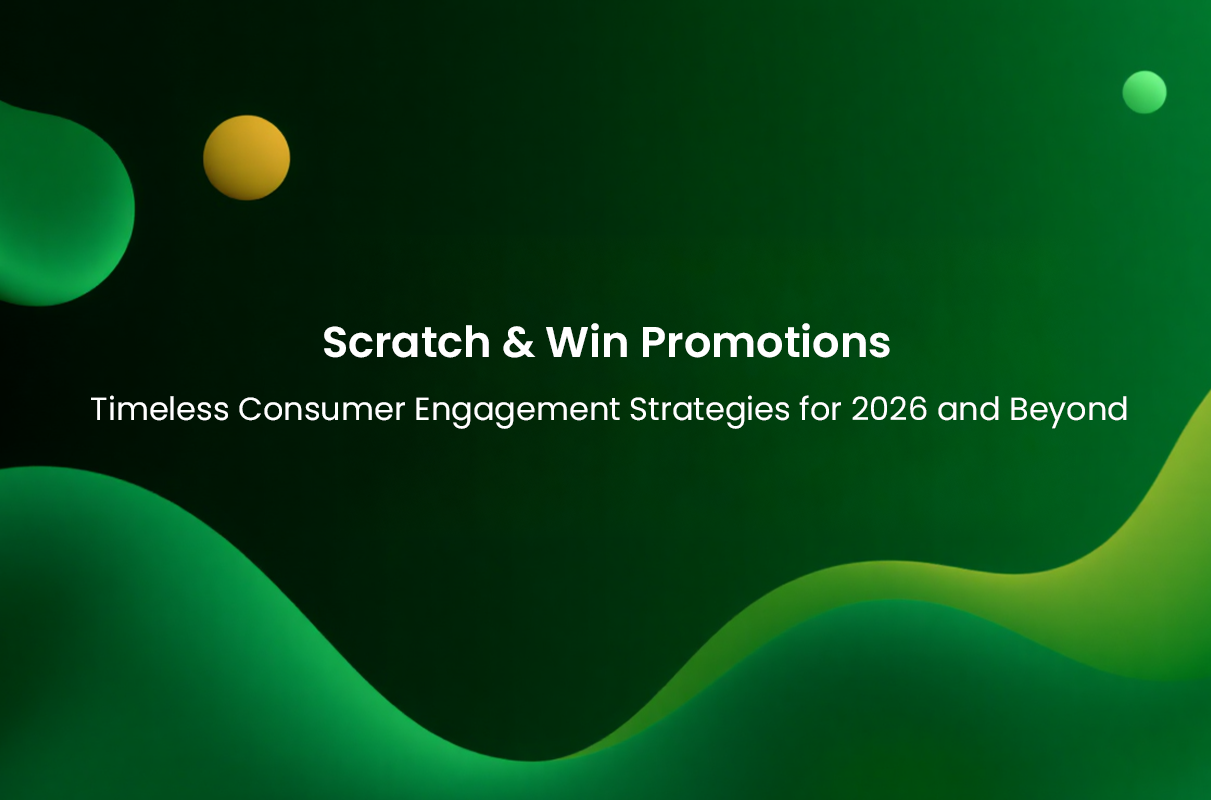
Scratch & Win Promotions: Timeless Consumer Engagement Strategies for 2026 and Beyond
Explore how scratch & win promotions remain a top consumer engagement strategy in India, evolving with digital innovation and RewardPort solutions.
Scratch & Win Promotions: Timeless Consumer Engagement Strategies for 2026 and Beyond
Scratch & win promotions have proven their enduring appeal across industries in India, continually evolving while remaining a go-to consumer engagement tactic. As we approach 2026, these promotions blend tradition with technology, driving engagement not only among consumers but also among channel partners and employees. RewardPort’s expert understanding and execution of scratch & win campaigns uniquely position brands to harness this dynamic method effectively.
The Enduring Popularity of Scratch & Win in India
Scratch & win promotions thrive on their simplicity and instant gratification. Consumers love the thrill of uncovering a surprise reward, which motivates trial, repeat purchases, and brand loyalty. From FMCG to consumer durables and automotive sectors, such campaigns have remained relevant due to their flexibility and adaptability. Even with rising digital transformation, physical scratch cards maintain traction, especially in regions or demographics with limited digital access.
Digital Transformation and Enhanced Engagement
The rapid penetration of smartphones and mobile internet in India has opened new avenues for scratch & win campaigns. Digital scratch cards and QR-code-based versions now allow seamless participation, reducing costs and fraud risk. RewardPort’s integrations with WhatsApp redemption flows and instant digital rewards facilitate real-time engagement and data capture, essential for personalized marketing. Leveraging AI and analytics, brands can optimize reward structures, predicting customer preferences while preventing abuse. This evolution has broadened scratch & win campaigns beyond consumer sales to dealer incentives and employee reward programs, creating multi-tier engagement strategies.
Expanding Reward Options for Diverse Audiences
Market preferences have shifted toward experiential and wellness rewards besides traditional cashbacks and gift vouchers. RewardPort’s extensive catalog, featuring travel experiences (VacPac, AirPac), OTT subscriptions, dining and entertainment vouchers, and health & wellness memberships, enables brands to tailor incentives that resonate with varied target segments. For instance, travel incentive programs have been effectively deployed to motivate channel partners, while instant food and movie vouchers appeal strongly to younger, urban consumers. Such thoughtfully curated rewards foster deeper loyalty and encourage repeat interactions beyond the promotional period.
Operational Excellence and Regulatory Navigation
While digitization mitigates operational challenges like slow prize fulfillment and opaque processes, navigating India’s complex lottery regulations requires expertise. RewardPort’s experience ensures that campaigns are designed within legal frameworks, using assured win models rather than gambling, thereby avoiding regulatory conflicts. Our plug-and-play modules like Freebucks for points and instant redemption and RewardOne voucher engines simplify campaign execution, ensuring compliance and scalability across states and urban-rural divides.
Case Studies Highlighting Impactful Execution
Among many successful collaborations, FMCG brands leveraging scratch & win for repeat buyer engagement have noted significant uplift in penetration and loyalty. Paint sector campaigns, integrating gamified dealer incentives with experiential rewards, demonstrate how scratch & win mechanics drive channel push effectively. Digital-era campaigns that combine WhatsApp scratch-to-win with instant cashback or wellness rewards show strong traction in tier 2 and 3 cities, overcoming traditional limitations and boosting participation rates.
Future Outlook: Integrating Scratch & Win with Loyalty Ecosystems
The future of scratch & win promotions lies in omnichannel loyalty and gamification ecosystems. RewardPort’s approach blends scratch & win with loyalty programs—incorporating tiers, multipliers, and referral incentives—that sustain engagement over customer journeys. Data-driven reward personalization will further refine impact, ensuring relevance and minimizing reward fatigue. As consumer expectations evolve, integrating diverse reward types, seamless digital experiences, and regulatory clarity will keep scratch & win relevant and effective.
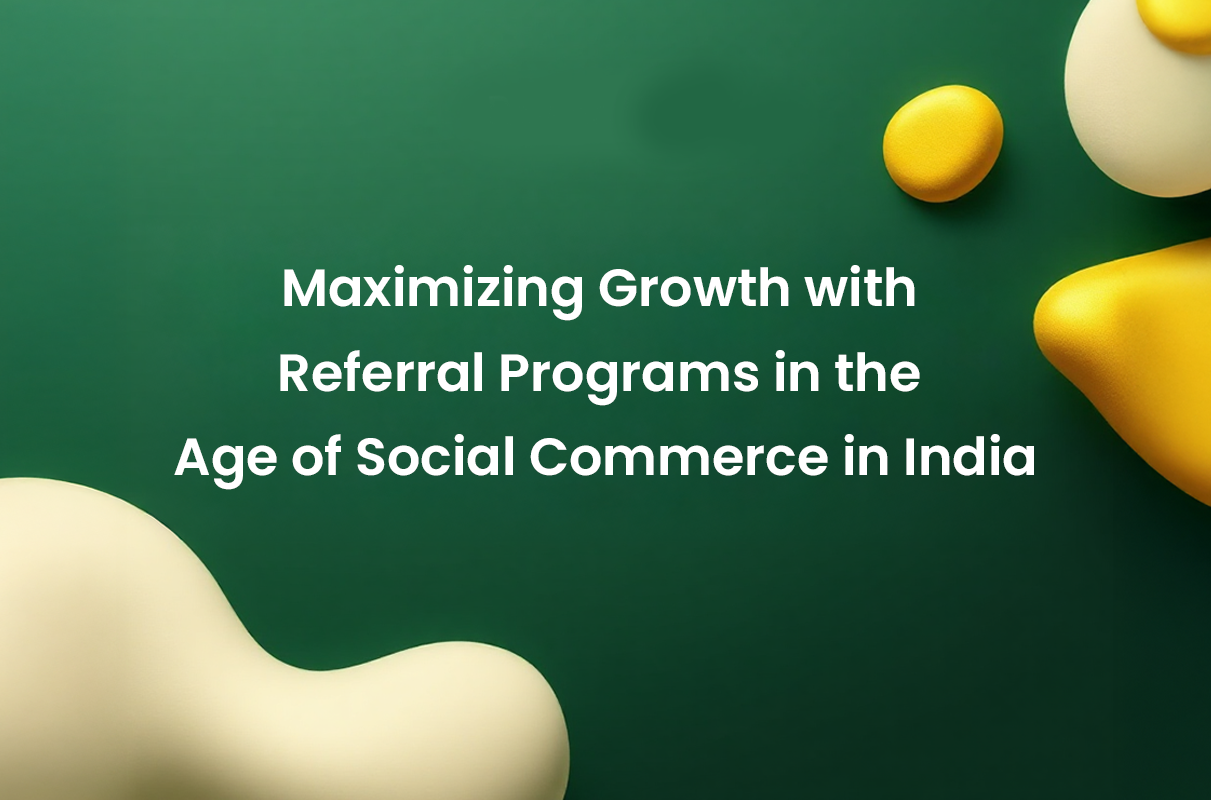
Maximizing Growth with Referral Programs in the Age of Social Commerce in India
Explore how referral programs powered by social commerce are transforming customer engagement and loyalty in India’s booming digital market.
Maximizing Growth with Referral Programs in the Age of Social Commerce in India
India’s social commerce landscape is witnessing unprecedented growth, reshaping how brands engage customers and channel partners. By 2025, the social commerce market in India is expected to reach between $8.4 billion and $20 billion, growing annually at around 17%. This surge is driven by widespread digital adoption and the rise of platforms like WhatsApp and Instagram, where referral programs are becoming crucial growth engines.
Understanding Social Commerce and Referral Programs in India
Social commerce integrates social interactions with online buying, enabling peer-to-peer product discovery and purchase within social media apps. Referral programs within this ecosystem tap into India’s culturally ingrained word-of-mouth behaviors, amplifying sales through trusted personal networks. These programs incentivize consumers and channel partners via rewards such as instant cashback, experiential perks, and wellness incentives, driving deeper engagement compared to traditional marketing.
Emerging Trends Transforming Referral Programs
Digital rewards have become more instant and versatile, with brands leveraging fintech integrations like UPI-based cashback and Buy Now Pay Later (BNPL) options to attract first-time buyers and empower dealers. Influencer and micro-affiliate programs are flourishing, particularly regional language creators who offer high conversion rates by addressing localized audiences. Referral mechanics increasingly focus on compliance—embracing privacy-first data capture and transparent reward disclosures due to evolving regulations, adding a layer of trust that supports sustainable growth.
RewardPort’s Strategic Perspective and Solutions
At RewardPort, we understand the critical role referral programs play in social commerce success. Our plug-and-play modules seamlessly integrate referral programs with rewards catalogs tailored to target audiences. For consumers, our solutions include instant digital cashbacks, food and wellness vouchers, and entertainment subscriptions that resonate with India’s vibrant youth and family segments. For channel partners and dealers, we offer travel club memberships, multi-brand gift vouchers, and gamification engines that build loyalty and drive repeat engagement. Our case studies reflect real-world success: brands employing referral programs linked to social commerce channels have witnessed improved acquisition, repeat purchase rates, and upselling opportunities. Meesho’s viral referral engine and tiered micro-entrepreneur incentives exemplify how leveraging social commerce plus referrals can create powerful brand ecosystems.
Best Practices for Referral Programs in Social Commerce
– Design rewards aligned with the preferences of your target segment, utilizing RewardPort’s extensive catalog. – Implement gamification and tiered incentives to sustain engagement beyond initial referral success. – Comply with India’s evolving regulatory landscape by ensuring influencer transparency and data privacy. – Leverage platform-specific strengths—WhatsApp for direct communications and Instagram for influencer-driven showcases. – Monitor and measure lifetime value of referred customers using integrated CRM and analytics tools.
Referral programs are central to the next phase of growth in India’s social commerce ecosystem. By combining culturally aligned peer influence with innovative reward mechanics and regulatory compliance, brands can amplify acquisition, engagement, and loyalty. RewardPort’s solutions empower businesses to design, execute, and track referral programs that resonate across consumer and channel partner segments, driving measurable business impact in the evolving digital economy.
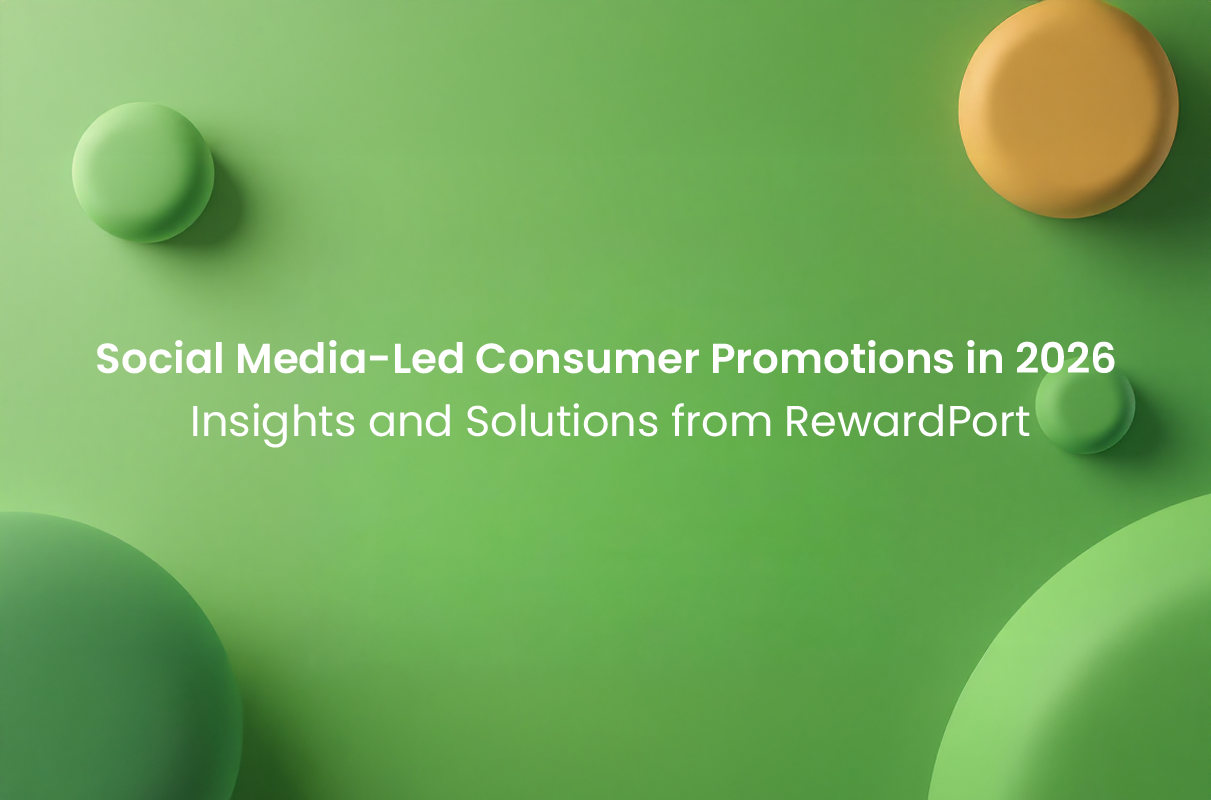
Social Media-Led Consumer Promotions in 2026: Insights and Solutions from RewardPort
Explore how AI-driven, hyper-local social media promotions with influencer and instant rewards lead consumer engagement in India in 2026.
Social Media-Led Consumer Promotions in 2026: Insights and Solutions from RewardPort
Social media continues to transform consumer promotions in India, with 2026 shaping up as a pivotal year. The rapid growth in mobile internet access and digital literacy, coupled with advanced AI tools and influencer marketing, is creating rich, immersive, and highly localized promotional experiences. For B2B marketers, trade leaders, and HR/channel heads, leveraging these trends strategically is key to driving engagement, loyalty, and sales velocity in India’s diverse, mobile-first market.
Context: The Rise of AI and Hyper-Localization in Social Media Promotions
India’s social media landscape in 2026 will be characterized by hyper-localization, regional language content, and AI-powered personalization. Brands that succeed will be those who harness data-driven insights to tailor messaging and rewards dynamically across multiple languages including Hindi, Tamil, Marathi, Kannada, and localized Hinglish dialects. RewardPort’s capabilities in crafting regionally relevant loyalty programs backed by AI analytics enable brands to deliver offers that resonate deeply with local consumer segments.
Key Social Media Trends Shaping Consumer Promotions
Video-first content, especially short-form reels and live commerce, dominates the promotional space with platforms like Instagram Reels, YouTube Shorts, and Moj becoming central to campaigns. Influencer marketing continues to expand rapidly, with a sharp rise in trusted nano- and micro-influencers in Tier-2 and Tier-3 cities, offering higher engagement and ROI. RewardPort’s integrated campaigns can seamlessly incorporate influencer tie-ins alongside instant reward mechanisms like QR scan-to-win, scratch cards, and cashback offers, ensuring maximum engagement and conversion. The growing prominence of messaging apps such as WhatsApp for business interactions opens up powerful avenues for channel partner incentives and real-time consumer engagement. RewardPort’s WhatsApp Redemption Flow exemplifies how social platforms can be used to deliver instant redemption rewards, strengthening both consumer satisfaction and trade partner motivation.
RewardPort’s Perspective: Aligning Solutions with 2026 Consumer Dynamics
RewardPort’s diverse execution methods—ranging from gamification, contests, cashback engines, to referral programs—are designed to integrate smoothly with social media campaigns. This ensures relevant reward types, such as OTT subscriptions, movie tickets, travel vouchers, and instant cashback, align effectively with target demographics. For example, youth-centric promotions benefit from OTT and food delivery voucher rewards, while family-oriented campaigns see better traction with travel, dining, and wellness incentives. Our plug-and-play modules like Freebucks or RewardOne facilitate quick rollout of tailored promotions with robust tracking and analytics, essential for optimizing performance in fast-moving social campaigns. Moreover, our case studies demonstrate how channel loyalty programs and dealer incentive schemes leveraging social media and WhatsApp have driven significant uplifts in trade engagement, repeat purchases, and brand recall.
Strategic Takeaways for Marketers and Channel Leaders
1. Prioritize AI-driven personalization for social campaigns, combining real-time data with regional language content to heighten emotional connect. 2. Leverage nano- and micro-influencers for authentic engagement, particularly in emerging markets beyond metros. 3. Integrate instant rewards and gamified elements within social media-led offers to boost participation and virality. 4. Use WhatsApp and similar platforms for frictionless partner and consumer incentive management, streamlining reward redemption. 5. Deploy RewardPort’s plug-and-play modules to efficiently tie promotional execution to measurable business outcomes.
Social media-led consumer promotions in 2026 will be defined by AI-driven personalization, rich regional content, influencer empowerment, and instant rewards that fit a mobile-first Indian marketplace. RewardPort stands at the forefront, offering proven solutions, a broad reward catalog, and deep expertise to help brands execute highly effective, data-driven social campaigns that drive growth and loyalty. Embracing these trends with RewardPort’s platform can unlock substantial competitive advantages and meaningful consumer engagement in India’s dynamic digital landscape.
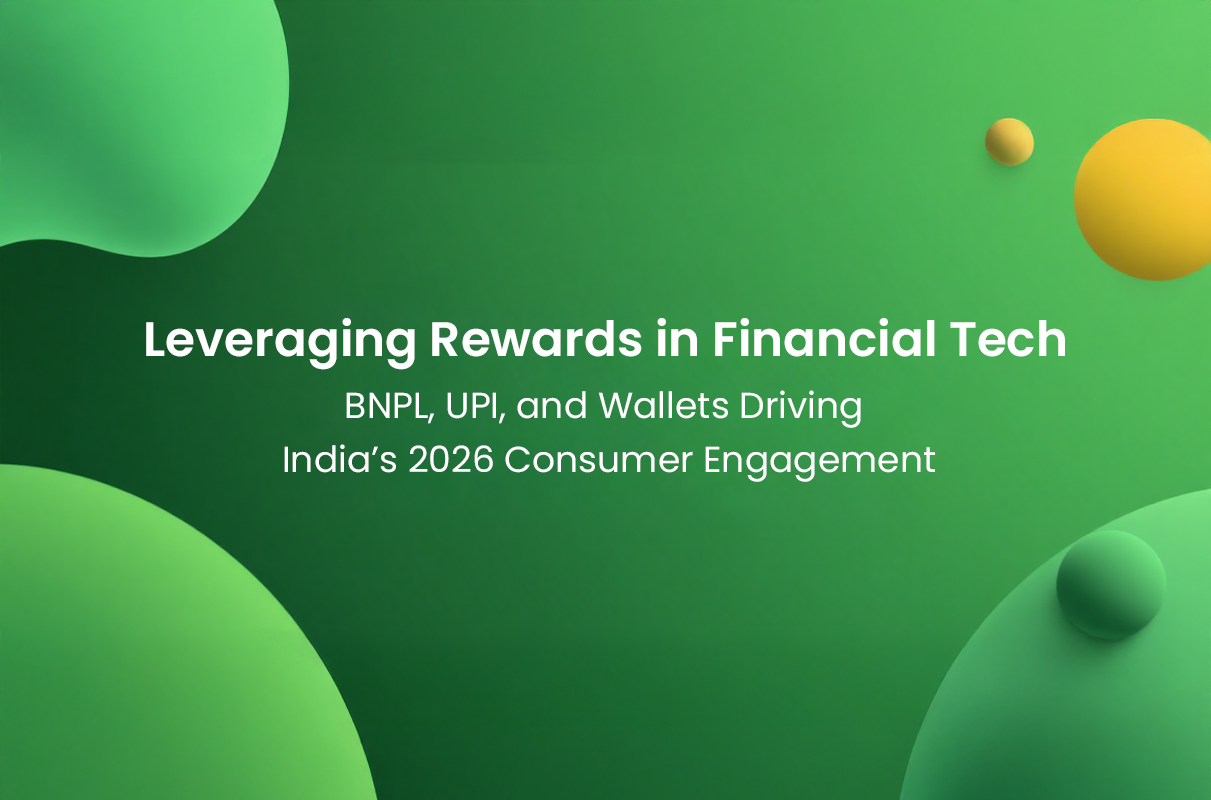
Leveraging Rewards in Financial Tech: BNPL, UPI, and Wallets Driving India’s 2026 Consumer Engagement
Explore how rewards tied to BNPL, UPI, and wallets transform Indian fintech marketing with RewardPort’s solutions and success insights.
Leveraging Rewards in Financial Tech: BNPL, UPI, and Wallets Driving India’s 2026 Consumer Engagement
India’s financial technology sector is booming, with digital payments through UPI, wallets, and BNPL (Buy Now, Pay Later) platforms reshaping consumer behavior and brand engagement. As we look towards 2026, rewards linked to these fintech innovations are becoming pivotal tools for B2B marketers, trade leaders, channel managers, and HR strategists to enhance acquisition, loyalty, and revenue growth. RewardPort, India’s trusted partner in consumer promotions and incentive programs, harnesses this dynamic landscape to deliver impactful, measurable results.
India’s Fintech Landscape: The Rise of BNPL, UPI, and Wallet Rewards
By late 2024, UPI monthly transactions crossed 15 billion in volume, moving nearly USD 280 billion in value, positioning it as a cornerstone payment method for millions nationwide. Wallets and prepaid payment instruments (PPIs), while experiencing slower growth, remain critical for instant payments and merchant incentives. Meanwhile, BNPL is evolving rapidly with tighter regulations ensuring transparent, responsible credit use, and brands increasingly embedding rewards to encourage timely repayments and upsell opportunities. Financial rewards linked to these platforms today go beyond simple cashback to include digital vouchers, instant redemption schemes, and experiential rewards such as wellness and travel—a trend growing fast among India’s increasingly digital and reward-savvy consumers. The growing integration of pay-by-points and gamification mechanics further enhance engagement, especially among younger demographics.
RewardPort’s Strategic Advantage in Fintech-Linked Rewards
At RewardPort, we tailor our promotions to the fintech ecosystem’s pulse. Our plug-and-play modules like Freebucks (points + pay), RewardOne (custom voucher engines), and Channely (channel partner incentives with CRM/ERP integration) are uniquely designed to integrate seamlessly with digital payments channels including UPI, BNPL, and wallets. For example, our collaboration with FMCG and technology clients uses instant disbursal of dealer incentives via UPI combined with tiered loyalty programs and wellness rewards from our extensive catalog to drive channel engagement and repeat sales effectively. Similarly, our cashback engine and gamification solutions power BNPL providers’ campaigns that reward timely repayment and increased product adoption with digital rewards and experiential prizes.
Insights from RewardPort Case Studies
– Dealer & Channel Partner Incentive Programs: Leveraging the Channely platform, clients have implemented real-time UPI wallet incentives with tier upgrades and multipliers, increasing dealer engagement by over 20% quarterly. – Consumer Acquisition via BNPL-linked Rewards: Incorporating our RewardOne vouchers tied to digital wallets encouraged trial purchases and timely payments, leading to a 27% boost in repeat transactions. – Gamified Cashback Campaigns: Using our gamification engine combined with cashback, brands observed higher frequency of purchases during festive seasons driving trial-to-repeat ratio upwards.
Emerging Trends for 2026 and Beyond
The future will see tighter integration of AI and data analytics creating hyper-personalized reward experiences across digital wallets and payments. Wellness and experiential rewards such as fitness memberships, holiday vouchers from VacPac, and dining credits will become mainstream to differentiate offers and deepen emotional brand connections. Regulatory clarity and consumer trust around BNPL will encourage platforms to innovate responsibly with rewards tied to credit health and timely repayments. Further, increasing UPI transaction limits for rural and semi-urban areas will broaden reward program reach, fostering inclusion.
In India’s fast-evolving fintech ecosystem, rewards linked to BNPL, UPI, and wallets are not just value-adds but core strategic levers powering acquisition, loyalty, and channel activation. RewardPort’s deep domain expertise, modular tech solutions, and robust rewards catalog—from instantaneous cashback to travel and wellness experiences—position businesses to scale engagement and ROI in 2026 and beyond.
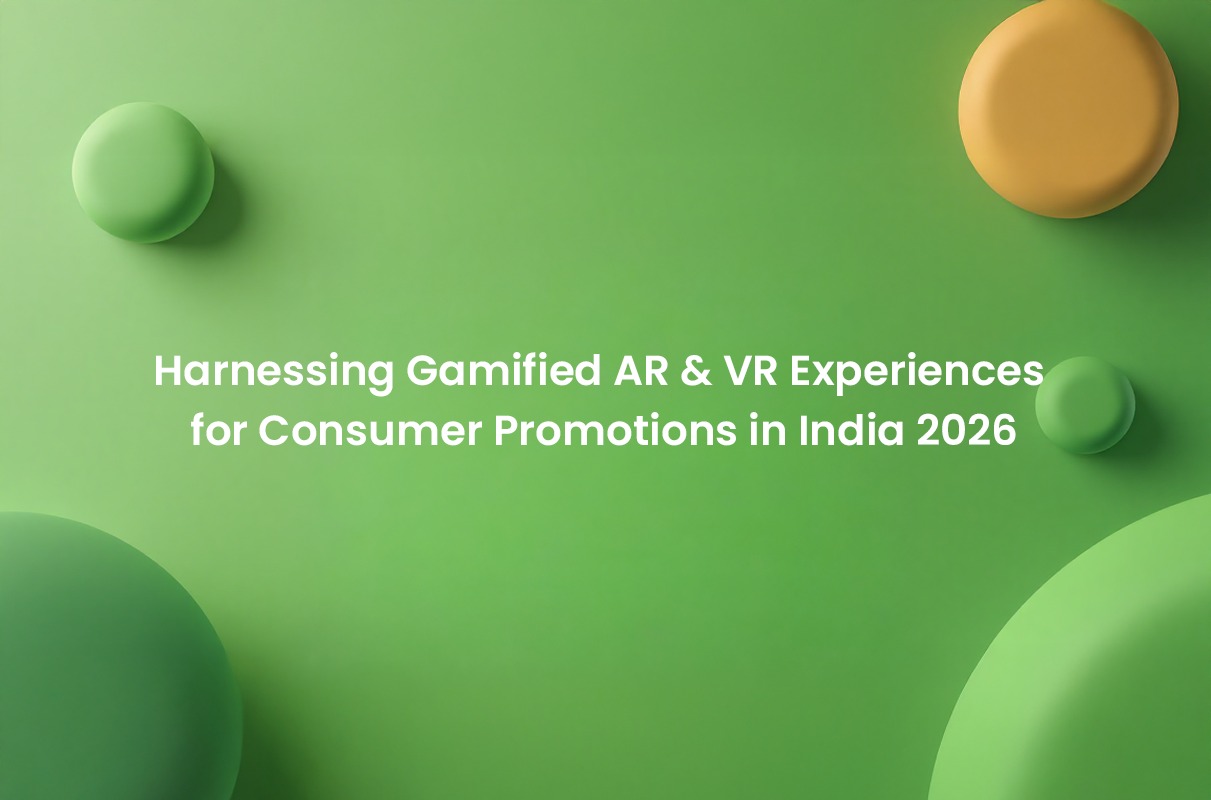
Harnessing Gamified AR & VR Experiences for Consumer Promotions in India 2026
Explore how gamified AR & VR consumer promotions in India boost engagement and loyalty with mobile-first, immersive rewards in 2026.
Harnessing Gamified AR & VR Experiences for Consumer Promotions in India 2026
The Rising AR & VR Wave in India’s Promotion Landscape
India’s augmented reality (AR) and virtual reality (VR) market is rapidly evolving, projected to reach approximately US$917.5 million by 2025 with user penetration nearing 45%. This growth is fueled by increasing smartphone adoption and 5G connectivity, making mobile-first AR experiences more accessible than ever. While headset-based VR remains niche due to cost, app-based AR promotions are gaining wider traction among Indian consumers and businesses alike. This shift sets a fertile ground for gamified AR & VR experiences to revolutionize consumer promotions, loyalty programs, and channel incentives by delivering richer, more interactive brand engagements.
Key Trends Driving Gamified AR & VR Promotions in 2026
Brands leveraging gamified AR/VR see markedly higher user engagement and brand recall. Indian consumers now expect promotions that go beyond passive interactions — gamification creates an active, playful environment that deepens emotional connection and encourages repeat participation. AR advertising revenue in India is estimated to hit US$182 million by 2025, reflecting growing marketer confidence. Gamified AR/VR promotions also enable instant, personalized rewards such as cashback, wellness experiences, or holiday vouchers, blending enjoyment with tangible value. In channel incentive programs, dealers encounter VR-based product demos and gamified contests that stimulate sales while rewarding partner loyalty.
RewardPort’s Perspective: Integrating Gamified AR/VR Into Consumer Promotions
At RewardPort, we recognize the power of immersive gamified AR & VR as an execution method for Indian marketers aiming for impactful brand activations. Our plug-and-play modules facilitate integrating branded gamified experiences seamlessly into multi-channel campaigns, ensuring adherence to cost-effective, mobile-first formats suitable to India’s market dynamics. By combining these engaging formats with our robust rewards catalog — spanning instant cashback, travel vouchers, entertainment passes, and wellness packages — campaigns achieve measurable uplift in trial, repeat purchase, and referral metrics. Our experience with client campaigns confirms that pairing gamified digital play with experiential or instant redemption drives a winning mix of fun and loyalty.
Case Insights from RewardPort Campaigns
While specific gamified AR/VR campaigns are emerging, parallels from RewardPort’s gamification, scratch & win, and WhatsApp redemption programs demonstrate proven lift in engagement and sales. For instance, FMCG clients employing interactive instant-win games with layered reward tiers have seen up to 3-5x participation increases relative to traditional scratch cards. Channel incentive programs deploying gamification to engage dealers with reward milestones yield higher motivation and accountability. Applying these best practices to AR/VR’s immersive play opens new avenues for Indian brands, especially leveraging mobile AR scavenger hunts, customizable VR product showcases, and real-time leaderboard contests.
Looking Ahead: Strategic Considerations for 2026 and Beyond
As AR/VR hardware becomes more affordable and content creation tools more accessible, brands should anticipate hybrid models combining smartphone AR with occasional VR headset activations at flagship events. Personalization powered by AI will further enhance gamified experience relevance and reward appeal. Marketers should also align gamified AR/VR experiences with clear KPIs — from trial and repeat sales to channel push and employee incentives — to maximize ROI. RewardPort’s multi-brand voucher catalogs and flexible reward engines are designed to support these evolving strategic imperatives with agility and scale.
Gamified AR and VR experiences represent a dynamic frontier for consumer promotions and channel incentives in India by 2026. RewardPort is uniquely positioned to help brands harness these innovations with proven gamification frameworks and a comprehensive rewards catalog optimized for the Indian market. By embracing mobile-first interactive play coupled with instant, appealing rewards, Indian marketers can unlock deeper consumer and partner engagement, driving loyalty and business growth in an increasingly digital landscape.

Cinema Rewards in India: Engaging Mass-Market Consumers with Digital and Experiential Loyalty
Discover how cinema rewards connect with mass-market consumers in India through digital, experiential, and instant loyalty programs for sustained engagement.
Cinema Rewards in India: Engaging Mass-Market Consumers with Digital and Experiential Loyalty
In India’s rapidly evolving entertainment landscape, cinema rewards are emerging as a powerful tool to engage the mass-market consumer. As traditional box office revenues face challenges, loyalty and reward programs tailored to India’s diverse consumer base present new opportunities for brands, exhibitors, and channel partners to connect, incentivize, and enhance customer lifetime value. This article explores key trends shaping cinema rewards in India through 2026 and beyond, tying these insights closely to RewardPort’s expertise and solutions that empower businesses to execute high-impact consumer promotions, loyalty programs, and channel incentives.
The Growing Importance of Cinema Rewards in India’s Loyalty Ecosystem
The Indian media and entertainment sector, valued at over INR 2.5 trillion as of 2024, is undergoing transformation driven by digital adoption and changing consumer behavior. Despite a moderate decline in theatrical revenues due to fluctuating footfalls, loyalty programs anchored around cinema experiences continue to offer significant engagement potential. RewardPort’s experience with over 7 million customers annually across 11,000+ programs highlights that consumers increasingly seek not only transactional incentives but experiential and instant rewards that create emotional connections.
RewardPort’s integrated platforms support multiple reward execution methods that resonate with Indian consumers at scale—from digital movie ticket vouchers and cashback rewards to exclusive screenings and gamified experiences. These reward types align tightly with consumer preferences for instant gratification and personalized engagement, thus driving repeat visits and upsell opportunities.
Key Trends Shaping Cinema Rewards in India
1. Digital & Instant Reward Redemption – Indian consumers prefer seamless reward access via mobile apps, digital wallets, and QR-based redemptions. RewardPort’s WhatsApp Redemption Flow and instant cashback campaigns enable quick, hassle-free redemption of cinema rewards, increasing program participation and consumer delight.
2. Experiential Incentives Gain Traction – Beyond transactional discounts, cinema rewards now include VIP screenings, celebrity meet-and-greets, and bundled entertainment experiences. RewardPort’s Travel Club and CineRewardz modules facilitate access to movie ticket rewards across 4,500+ screens, incorporating tiered loyalty and exclusive event access to boost consumer affinity.
3. Coalition & Multi-Brand Loyalty Programs – Consumers value versatile reward catalogs. RewardPort’s RewardOne engine powers multi-brand catalogs featuring cinema vouchers alongside dining, travel, and wellness rewards, encouraging cross-category engagement and creating deeper brand loyalty.
4. Channel Partner & Dealer Incentives – Cinema chains and entertainment brands integrate channel incentives that reward distributors and retail partners for promoter efforts. RewardPort’s Channely module with CRM/ERP integrations ensures transparent tracking, tier multipliers, and timely rewards to motivate channel growth.
5. Data-Driven Personalization – Leveraging analytics and consumer insights underpins campaign effectiveness. RewardPort’s platforms enable sophisticated data capture and segmentation, facilitating tailored reward offers that boost ROI and customer retention.
RewardPort’s Proven Solutions Driving Cinema Reward Success
RewardPort champions a full-lifecycle approach from acquisition through loyalty, integrating proven execution methods based on client case studies:
- Gamification + Instant Redemption: Engagement spikes with branded scratch cards, spin-the-wheel games, and instant coupon deliveries on cinema ticket purchases.
- Gift with Purchase: Assured movies tickets or cashback with product bundles have driven penetration growth for FMCG brands linked with cinema rewards.
- Tiered Loyalty Programs: RewardPort’s tiered reward structures encourage higher spend and repeat visits through exclusive benefits and experiential perks aligned with cinema brands.
Our robust reward catalog includes OTT subscriptions, multi-brand gift vouchers, dining, travel, wellness services, and more—each strategically selected for Indian mass markets to ensure relevance and high redemption rates. This comprehensive offering enables cinema campaigns to appeal broadly while delivering measurable business impact.
Unlocking Mass Consumer Engagement with RewardPort’s Cinema Rewards Expertise
As cinemas compete for consumer attention amid a crowded entertainment environment, rewards programs anchored by technology, personalization, and experiential value are essential. RewardPort’s comprehensive suite of loyalty and incentive solutions, backed by deep market insights and a rich rewards catalog, empowers marketers and channel leaders to drive sustained engagement and growth across India’s mass-market consumers. Partnering with RewardPort means leveraging best-in-class execution models, from instant cashback to immersive gamified campaigns, tailored for the dynamic Indian cinema ecosystem into 2026 and beyond.
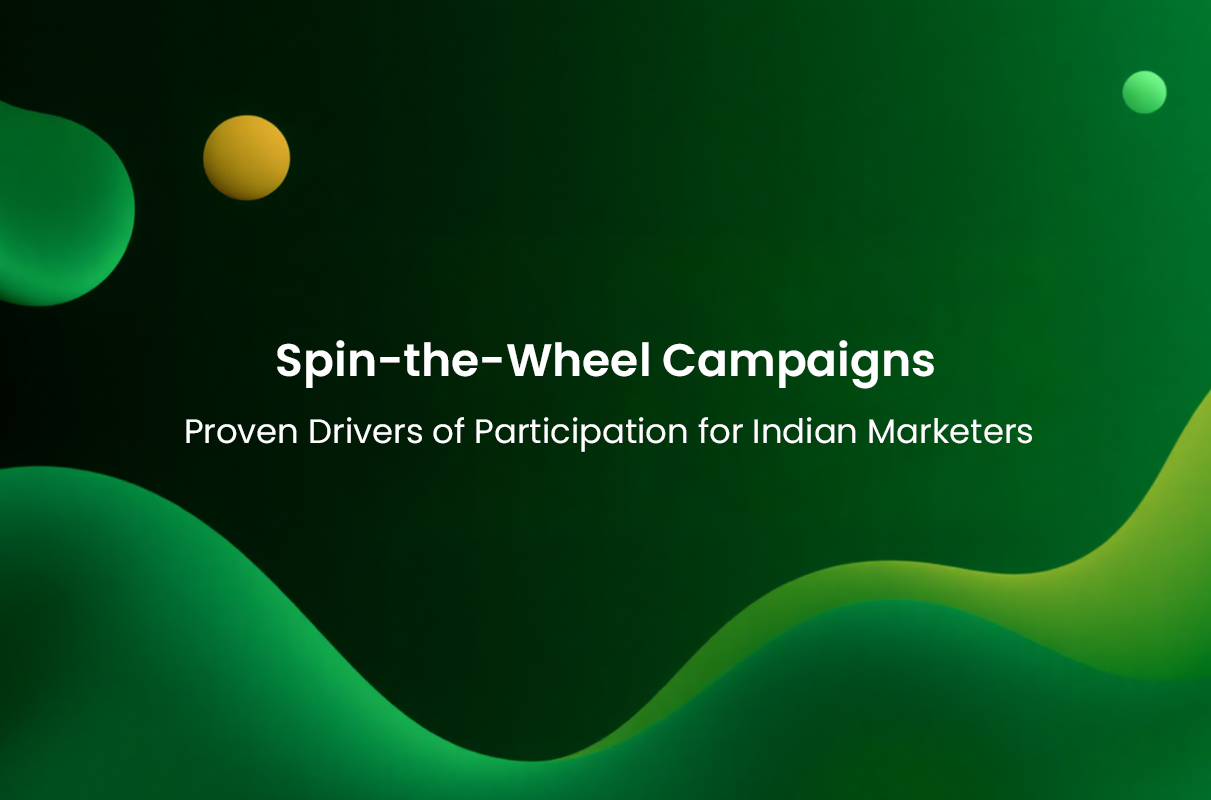
Spin-the-Wheel Campaigns: Proven Drivers of Participation for Indian Marketers
Explore how spin-the-wheel campaigns boost engagement and loyalty in India with instant rewards and personalized experiences.
Spin-the-Wheel Campaigns: Proven Drivers of Participation for Indian Marketers
Spin-the-wheel campaigns have emerged as highly effective tools for consumer promotions, loyalty programs, and channel partner incentives in India. Between 2024 and 2026, they have gained traction due to their dynamic engagement features and ability to deliver instant gratification, making them a favored tactic among B2B marketers, trade leaders, and HR/channel incentive planners.
Why Spin-the-Wheel Campaigns Drive High Engagement
Data from recent Indian market campaigns indicate spin-the-wheel models consistently achieve participation rates of 30–40%, outperforming traditional static rewards like coupons or point systems. This high engagement is primarily due to the game’s element of chance combined with instant rewards, which appeals to consumer psychology and the desire for immediate benefits. The perceived fairness and transparency of spin-the-wheel odds also foster trust, encouraging repeat participation from consumers and channel partners alike. For Indian brands, leveraging digital platforms such as mobile apps, WhatsApp, and QR codes at points of sale facilitates seamless omnichannel engagement, even in tier-2 and tier-3 cities.
Trends in Reward Types and Campaign Execution
Successful spin-the-wheel campaigns integrate diverse rewards that cater to varied audiences. Popular incentives include instant cashback, UPI credits, mobile recharges, shopping vouchers, and wellness gifts such as health checkups and fitness app subscriptions. Wellness and experiential rewards see increased uptake among younger demographics, especially Gen Z and young professionals. On the B2B front, spin-the-wheel mechanics have proven their worth in dealer and channel partner programs. Incentivizing sales targets with gamified rewards can boost order frequency by 20–45%, moving beyond conventional slabs-based incentives. This not only drives higher sales but also enhances partner loyalty. Personalization is an emerging trend where campaign platforms tailor wheel odds and rewards based on participant history and segmentation. This strategic approach ensures sustained engagement and higher campaign ROI.
RewardPort Perspective and Solutions
At RewardPort, we understand the critical balance between fun and strategic objectives in spin-the-wheel campaigns. Our gamification engine supports over 100 branded game formats, including spin-the-wheel, enabling brands to run seamless, engaging campaigns with robust tracking and analytics. Moreover, our Reward Catalog offers a vast selection of rewards across travel, entertainment, food, health & wellness, essentials, and gift vouchers—ensuring the prize mix aligns perfectly with target audiences. For example, integrating movie tickets and pizza vouchers appeals to younger consumers, while travel and dining vouchers resonate with family segments. Our case studies reflect these insights: channel partner programs using spin-the-wheel mechanics have shown measurable uplifts in engagement and sales. By integrating instant digital rewards with personalized redemption experiences, RewardPort clients see stronger loyalty and repeat participation.
Regulatory Considerations and Best Practices
Brands must ensure compliance with Indian regulations by structuring spin-the-wheel campaigns without participation fees and linking spins to legitimate purchase or engagement activities. Transparent communication regarding odds and rewards is essential to maintain consumer trust and avoid perceptions of gambling. Brands are encouraged to leverage data-driven insights from campaign analytics to refine audience segmentation and optimize reward allocation, driving consistent program improvement.
Spin-the-wheel campaigns offer a proven, dynamic method to increase participation and loyalty in diverse Indian market segments. When executed with a balanced rewards strategy and supported by digital engagement platforms like RewardPort, these campaigns deliver measurable uplift in customer and channel partner engagement, translating directly into business growth.
